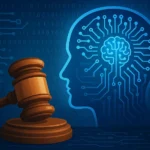How Intangible Assets Are Redefining Global Competitiveness in the Age of AI
- Updated on: Aug 11, 2025
- Read 2 minutes
By
- Published on Aug 9, 2025
In the corridors of economic policymaking and boardrooms of leading companies, a silent revolution is underway. The most valuable assets driving growth today are no longer the factories, machinery, or office towers of the industrial age. They are the invisible engines of innovation: data, software, brands, and intellectual property.
The 2025 World Intangible Investment Highlights by WIPO and Italy’s Luiss Business School confirms what forward-looking leaders have sensed for years: intangible assets are outpacing physical investments at an unprecedented rate. In 2024, intangible investment across 27 major economies grew three times faster than tangible assets, reaching USD 7.6 trillion. This shift is not a blip, it’s a structural transformation of how economies grow and compete.
Why This Matters for Businesses and Nations
The United States remains the global heavyweight, investing nearly double the combined total of France, Germany, Japan, and the UK. Sweden leads in intensity, with intangible investment making up 16% of its GDP. India’s rise is particularly notable: its intangible intensity, around 10%, already surpasses Japan and several EU economies, with the fastest annual growth rate globally (6.6% between 2011 and 2022).
These figures point to a clear truth: nations and companies that invest aggressively in intangible capital will define the future of innovation and competitiveness.
The AI Effect: Two Waves of Transformation
The AI boom is a prime accelerant. WIPO’s report identifies two distinct waves of AI-driven investment:
- Capacity Installation – Building the infrastructure: AI chips, supercomputers, cloud data centers.
- Structural Transformation – Embedding AI into the fabric of business: reengineering processes, retraining talent, and leveraging data to unlock new value chains.
Software and databases, critical foundations of AI, are the fastest-growing intangible category, expanding at over 7% annually for nearly a decade. In the US, AI-related tangible investments have already nudged overall capital formation upward, a trend set to ripple across other economies.
From Balance Sheets to Policy Agendas
Intangible assets now account for 14% of GDP across the surveyed economies, compared to tangible assets’ 11%. Yet, measurement remains inconsistent. Undervaluing intangibles leads to capital misallocation and missed opportunities for growth.
Policymakers must rethink industrial strategies for the knowledge economy. Tax incentives, education reforms, IP protection, and data infrastructure investments are not optional, they are the new economic foundation. Similarly, corporate leaders must treat intangible capital not as a secondary line item, but as the strategic core of their business model.
The New Competitive Equation
We are moving toward an economic model where innovation capacity is the primary differentiator. Countries that nurture an ecosystem for R&D, protect intellectual property, cultivate digital skills, and support AI adoption will lead in productivity, economic resilience, and living standards.
In short: the age of smokestacks is over; the age of code, creativity, and cognition has begun.
The WIPO–Luiss report is more than an economic snapshot. It is a call to action. For businesses, the time to double down on intangible investment is now. For governments, the imperative is to create the conditions for such investment to flourish. In the age of AI, competitive advantage will be built not in factories, but in the minds, algorithms, and ideas of those who dare to think beyond the tangible.










No comment yet, add your voice below!